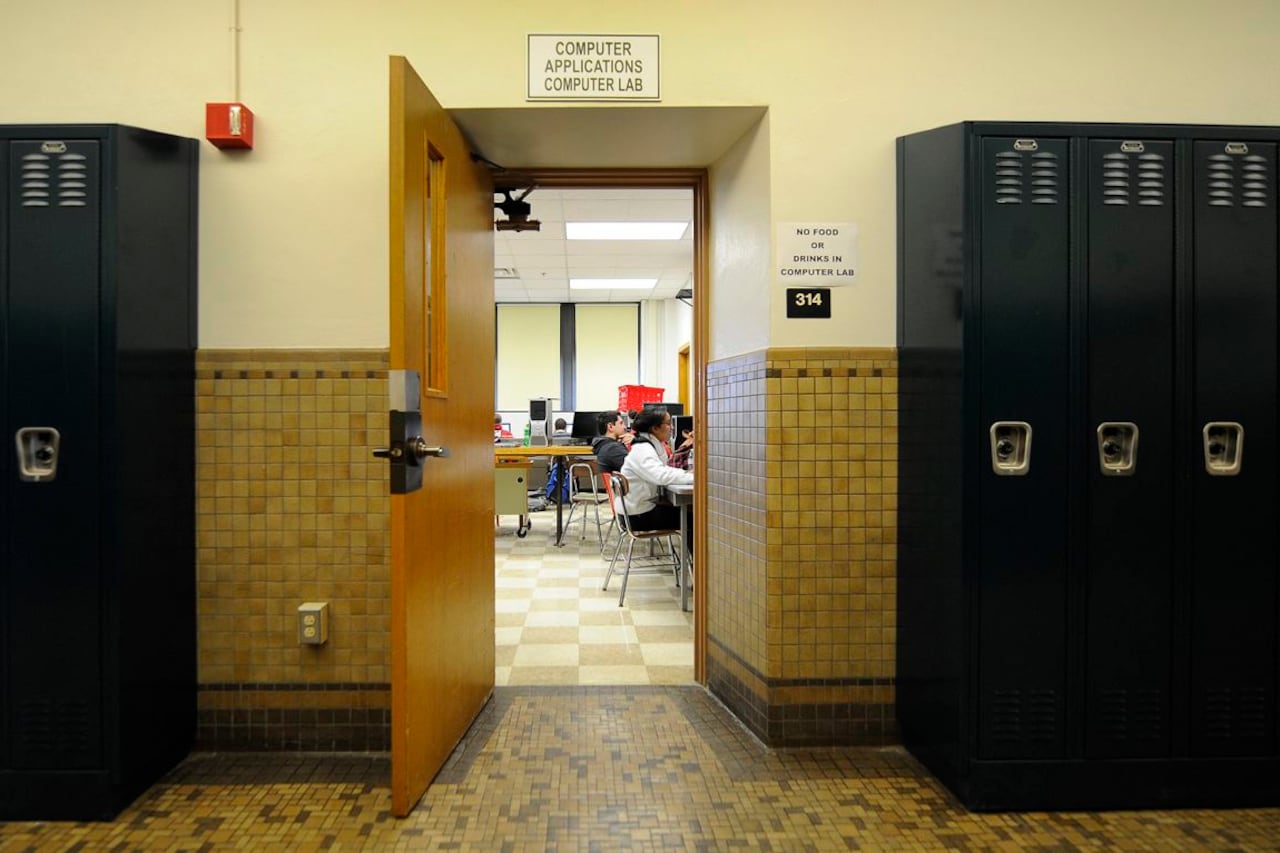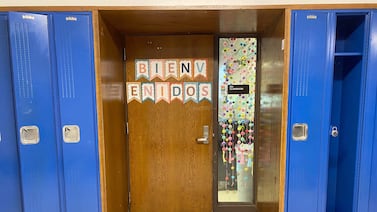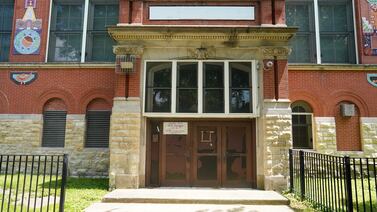Even though the state boasts an increased education budget each year, Indianapolis Public Schools receives $15 less per student today in basic state funding than it did seven years ago.
That’s because IPS’ gains in funding for each student have been eaten up by a sharper decline in state support for students in poverty, district officials say.
In recent years, Indiana lawmakers have prioritized across-the-board increases for schools over support for disadvantaged students, favoring budget strategies that buoy more affluent districts while higher-poverty schools say they’re left without enough resources to serve disadvantaged students.
Now, state representatives are proposing a two-year freeze on the amount of extra aid for educating students in poverty, a move that would continue the trend that some educators say touts equal funding at the expense of equitable funding.
Under the House budget projections, IPS would receive the smallest hike in basic state funding for each student out of more than 40 Central Indiana districts — just 0.5% over the next two years, while the rest of the state averages a 3.4% increase.
“The districts of high poverty are taking it on the chin,” said David Marcotte, executive director of the Indiana Urban Schools Association.
The trend started as a response to suburban districts’ concerns about a wide disparity between what districts across Indiana receive in state support. Suburban districts take in less funding per student, because they tend to serve a smaller proportion of students from low-income families and therefore don’t benefit as much from the supplemental poverty funds, what Indiana calls “complexity” dollars.
But as Republican lawmakers sought to narrow that difference, some educators say they have cut too deeply into extra state aid for students in poverty — a funding pool that has plummeted 41% in seven years, from $1.14 billion in 2013-14 to a projected $670 million in 2020-21.
School funding, House Speaker Todd Huston said last week, is a balancing act. He defended the House’s budget proposal to focus on increasing the funding baseline and emphasized that high-poverty schools have benefited from two rounds of federal relief.
“There’s always pressure to fund complexity at greater and higher amounts,” said Huston, R-Fishers. “Putting more dollars toward students in the foundation benefits all schools.”
While poverty in Indiana has shot up during the pandemic, as measured by the higher demand for food stamps, the House budget suggests capping the extra funding for districts seeing big increases in poverty. The provision could stanch funding for more than 40 districts and charter schools, a Chalkbeat analysis shows, while also cushioning the drop for about 40 others, including IPS.
The state has drastically winnowed who qualifies for the extra funding. Historically, the state used the number of students qualifying for free or reduced-price meals or free textbooks to measure poverty. But in 2015, Indiana switched to determining poverty aid based on the number of students in foster care, or who received food stamps or welfare.
Those federal benefit programs have lower income qualifications, and many educators worry some families may not sign up for fear of stigma or exposing their immigration status.
How much the state sets aside for each student in poverty also factors in.
“The biennial budgets really have a focus and are trending toward an equal funding base for everyone, regardless of need — not an equitable funding base,” said Weston Young, IPS’ chief financial officer. “If you don’t get any more in the complexity base, you’re toast.”
The number of students qualifying for poverty aid in IPS is also set to decrease over the next two years, based on a count last fall, even though district officials say it remains among the districts with the highest needs.
IPS uses the additional dollars to serve those students in a number of different ways, Young said, such as to hire additional social workers or other specialists, reduce class sizes, or provide wraparound services such as mental health support.
“It really taps the ability to continue to do what we want to do,” Young said. “When the dollars go away, or when they are reduced relative to other districts, those supports and those services are at risk.”
Several recent reports on school funding in Indiana have come to the same conclusion: The state went too far in cutting poverty aid to schools. Now, lawmakers should reverse course, the reports say, by giving more funding to schools serving students in poverty.
The governor’s teacher pay report pointed to 27 school corporations that received less state support per student in 2020 than in 2015. They all serve more than the average proportion of students from low-income families.
A report advocating for increasing Indiana charter school funding raised a concern that cuts to complexity funding may have hurt students academically, pointing to declines in test scores in Indiana’s highest-poverty schools over corresponding years.
A funding analysis from the Indiana Urban Schools Association found that the most affluent districts averaged the greatest annual increases in total state funding in recent years — more than 2.5 times the rate of the highest-poverty districts.
In Wayne Township, a westside Indianapolis district where two-thirds of students come from low-income households, the decline in complexity funding has meant per-student state support has remained flat over the past three budget cycles.
And Superintendent Jeff Butts is frustrated that it could stay that way under the current budget draft: “I believe that there is not as great of an understanding of what our students of high complexity need,” he said.
Without significant increases in state funding, the district twice turned to voters to generate more funding through local property tax referendums, in 2015 and 2019.
“Why should my community, through referendum, have to make up for what the state’s not providing?” Butts said.
Even though state funding is meant to cover schools’ operating expenses, insufficient state dollars have driven more districts, including IPS and Wayne, to seek property tax increases. But some districts may not win those extra dollars, and charter schools don’t have the option at all.
Butts also noted that many local families are struggling through the pandemic, experiencing food insecurity, unemployment, and a lack of resources for remote learning. He found it inexplicable why the state projects a decrease in Wayne Township students in poverty.
The first round of federal relief dollars didn’t cover all the district’s COVID-related expenses, he said, and the district’s ideas for accelerating learning to offset the effects of the pandemic would cost nearly twice the amount expected to come in the second round.
“Wish us some good luck in the next several weeks,” Butts said. “I’d like to focus on what’s going on in our classrooms, but we’re going to spend a whole lot of time working with our legislators.”
Dylan Peers McCoy contributed to this report.








